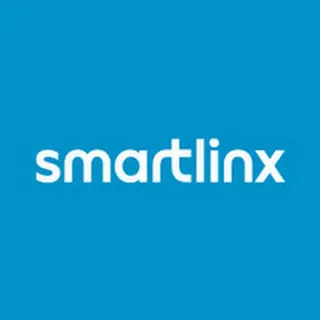Organizations that rely on hourly workers face constant pressure to manage schedules, track time, and stay compliant with labor laws. This is especially true in industries like healthcare, senior care, hospitality, and manufacturing, where 24/7 coverage is critical. Missing just one shift or failing to monitor work hour limits can lead to smartlinx issues, patient safety risks, or costly overtime.
Managers spend a large portion of their time fixing scheduling conflicts, covering last-minute callouts, and ensuring that payroll data matches attendance records. These challenges aren’t just administrative they impact quality of service, team morale, and budget control.
The Cost of Manual Scheduling
Many facilities still use spreadsheets, whiteboards, or disconnected software systems to manage employee shifts. While these methods might seem simple, they often lead to problems. According to a 2023 report by the Society for Human Resource Management (SHRM), companies using manual workforce tracking tools are 40% more likely to report payroll errors and 30% more likely to experience frequent understaffing.
Without real-time data or visibility, organizations are left guessing whether shifts are fully covered or compliant. That guesswork can cost thousands in extra wages, agency fees, and audit risks.
What Smartlinx Offers
Smartlinx is a workforce management platform that helps teams schedule, track, and optimize labor across facilities. It is designed for industries with shift-based operations and high compliance demands. The platform brings scheduling, time and attendance, labor law tracking, and payroll integration into one unified system.
Smartlinx is currently used by more than 3,400 facilities across the United States, particularly in long-term care, assisted living, and skilled nursing environments. These organizations use the platform to gain control over labor costs and ensure the right people are working at the right times.
Smartlinx in Practice
A healthcare network with 20 senior care facilities implemented Smartlinx to address overtime spikes and staffing inconsistencies. Within the first quarter, the organization reduced overtime costs by 22% and decreased shift vacancies by 18%. They credited the improvement to faster visibility into shift coverage and automated scheduling alerts.
Another long-term care provider saw a 35% reduction in payroll processing time by using Smartlinx to directly connect time tracking with their payroll provider. The time savings allowed HR staff to focus on training and employee development instead of manually correcting hours worked.
Key Functions That Drive Efficiency
Shift Scheduling
Smartlinx simplifies shift creation by using employee availability, role requirements, and labor rules to recommend optimal coverage. Managers can fill open shifts quickly and avoid unplanned overtime.
Real-Time Attendance Monitoring
The system tracks who is clocked in, who is late, and who is missing from their assigned shift. This allows supervisors to make immediate adjustments without waiting for post-shift reports.
Labor Law Compliance
Smartlinx monitors work hours, certifications, and scheduling requirements to ensure compliance with state and federal labor regulations. Automated alerts warn managers before violations occur, reducing the risk of penalties or lost reimbursements.
Payroll Integration
Work hours are recorded and verified in real time. Approved hours automatically feed into payroll systems, reducing manual data entry and lowering the risk of paycheck errors.
How Smartlinx Supports Daily Workflows
When a staff member calls out last minute, managers using Smartlinx can see who’s qualified and available to step in. The system sends shift offers directly to eligible employees through the mobile app, avoiding the need for mass texts or phone calls.
For human resource teams, Smartlinx offers data across departments and locations, showing trends in absenteeism, overtime, and compliance gaps. This helps leadership allocate resources more effectively and reduce unnecessary spending.
Employee Tools That Encourage Engagement
Smartlinx offers mobile access so employees can check schedules, request time off, and swap shifts directly from their phones. This cuts down on administrative back-and-forth and gives staff more control over their work life.
Facilities using mobile tools within Smartlinx report higher staff engagement and fewer no-shows. In a survey conducted by a senior living organization, 64% of employees said they felt more connected to their work after gaining access to mobile scheduling features.
Decision-Making Backed by Data
Smartlinx provides dashboards and reports that show operational performance in real time. Managers and executives can track key metrics like cost per shift, labor hours per resident, and unfilled shifts. This data helps facilities respond quickly to workforce challenges and forecast future needs more accurately.
One regional director overseeing multiple nursing homes used Smartlinx to identify that one facility was consistently using overtime to cover weekends. By adjusting scheduling patterns, they saved over $75,000 annually without reducing care quality.
Benefits That Add Up
Organizations that adopt Smartlinx often report results within the first few months. These include:
- Fewer payroll corrections
- Lower overtime and agency usage
- Faster shift coverage
- Improved schedule accuracy
- Greater visibility into labor costs
Smartlinx helps organizations shift from reactive management to proactive planning, reducing stress on both staff and managers.
Conclusion
For organizations that depend on hourly workers and shift-based operations, workforce management needs to be more than just a scheduling tool. It has to offer real-time visibility, reduce manual work, and support compliance from day one. Smartlinx gives teams the tools they need to manage labor with precision and confidence.
If your facility struggles with coverage gaps, payroll accuracy, or overtime control, Smartlinx is a proven platform that helps teams work smarter every day.







